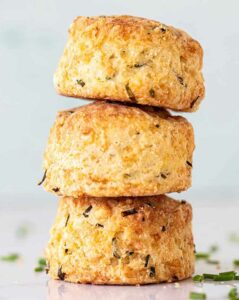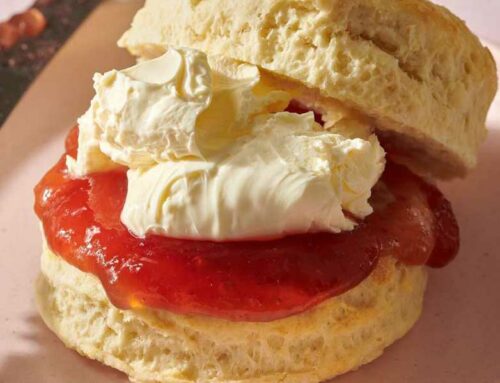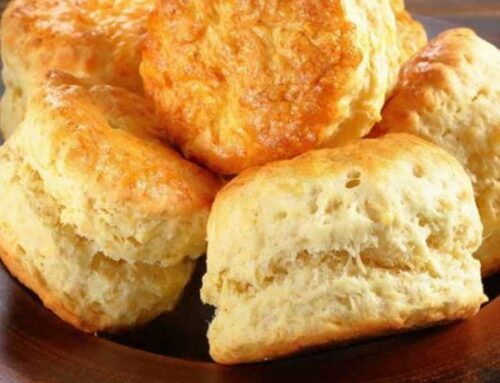Scones, What to Know Before You Eat One, Part II
 How to Pronounce the Word
How to Pronounce the Word
You are looking forward to your first cream tea. You see a pastry in front of you. If you’re an American, it looks like a buttermilk biscuit with raisins. You want to refer to it by name. What do you call it? Is it a “scon” – rhymes with “gone” – or is it a “scone” – rhymes with “own.”?
Luckily, you have two British friends with you, so you ask them. The one who comes from Northern England replies, with a great sense of assurance, “scon.” “No!” objects your other friend, who grew up in the English Midlands. “That’s a “scone!”
“You’re both wrong,” says a woman sitting at the next table. “It’s pronounced ‘scoon,’ like the ancient capital of Scotland – ‘Scone.’”
If the British can’t agree about this quintessentially British treat (or is it?) what’s a poor Yank to do? Which brings us to the burning question:
Where Do Scones Come From?
Look for a restaurant that serves tea in New York and at the very swankiest places you will see this meal referred to as either “English Tea” or “High Tea.” It is a given that scones will be part of the menu. For Americans, there is no question that scones must have originated in England. However, according to culinary historians, scones actually came into being in – wait for it – Scotland! Maybe.
There is a real “Scone” in Scotland. It is situated in the historical province of Gowrie and the old county of Perthshire. Old Scone was the historic capital of the Kingdom of Scotland, where kings were crowned on the “Stone of Scone.” These included the Scottish kings Macbeth, Robert the Bruce and Charles II. In the Middle Ages, the town of Perth and the Abbey of Scone both came into being. (https://en.wikipedia.org/wiki/Scone,_Scotland)
According to Foodmag.com, the term “scone” first appeared in print in a Scottish version of the Aeneid in 1513. However, it is unlikely that the term was intended to refer to a baked delicacy! More likely, it referred to the Scottish name for the Stone of Scone – also known as the Stone of Destiny – where the kings were crowned. (https://www.foodmag.com.au/origins-of-the-scone.)
“A Short History of Scones,” produced by Ackroyd’s Scottish Bakery, which is based in Redford, Michigan, suggests that scones developed in Scotland in the 16th century and are derived from another “quick bread” called bannocks. These oat-based flatbreads were often cooked on a griddle and cut into farls. Farls are quadrants created from cutting a circle cut into four equal parts. The resulting shape is triangular. In England, scones are round. In America, most commercially produced scones look like farls. (https://ackroydsbakery.com/ackroyds-news-views/a-short-history-of-scones/#:~:text=Though%20it%20isn’t%20certain,griddle%20and%20cut%20into%20farls.)
So What Exactly Is a Scone?
If you’re an American, especially one who lives in the Northeast, think “buttermilk biscuit.” If you live in the South, think “biscuits and gravy.” If you’re British, you know what a scone is. For Americans, the difference between American biscuits and scones comes down to a couple of ingredients.
Buttermilk biscuits are made with all purpose flour, baking powder and baking soda (to make them rise,) a little sugar, salt, unsalted butter and buttermilk –also to help with the rising.
Scones use eggs to help the dough to rise. The eggs also create a somewhat richer dough. English recipes for scones vary in the type of flour that is used. Self-rising flour is a common ingredient. However, Paul Hollywood of “The Great British Baking Show” suggests using strong bread flour. (I confess to not knowing that there was “weak” bread flour.) The other ingredients are unsalted butter, caster sugar (very finely ground sugar, not powdered sugar,) regular milk and baking powder.
Scones can be sweet or savory. The scones used for a cream tea have a slight sweetness and usually have raisins. However, every scone baker has her own “tweak” on her scone recipe.
Eating a scone is not just the consumption of a pleasant taste treat. It is a true culinary experience. In her book “The Inheritance Games,” award winning YA writer Jennifer Lynn Barnes’ character Xander, a scone expert explains, “…if there is one universal truth in the human experience, it is that a finely honed scone-eating palate does not just develop overnight.”
You can find scone and biscuit recipes in Nola’s Recipe Chest.. Enjoy!



I needed to thank you for this excellent read!! I certainly enjoyed every little bit of it. I have got you saved as a favorite to check out new things you postÖ